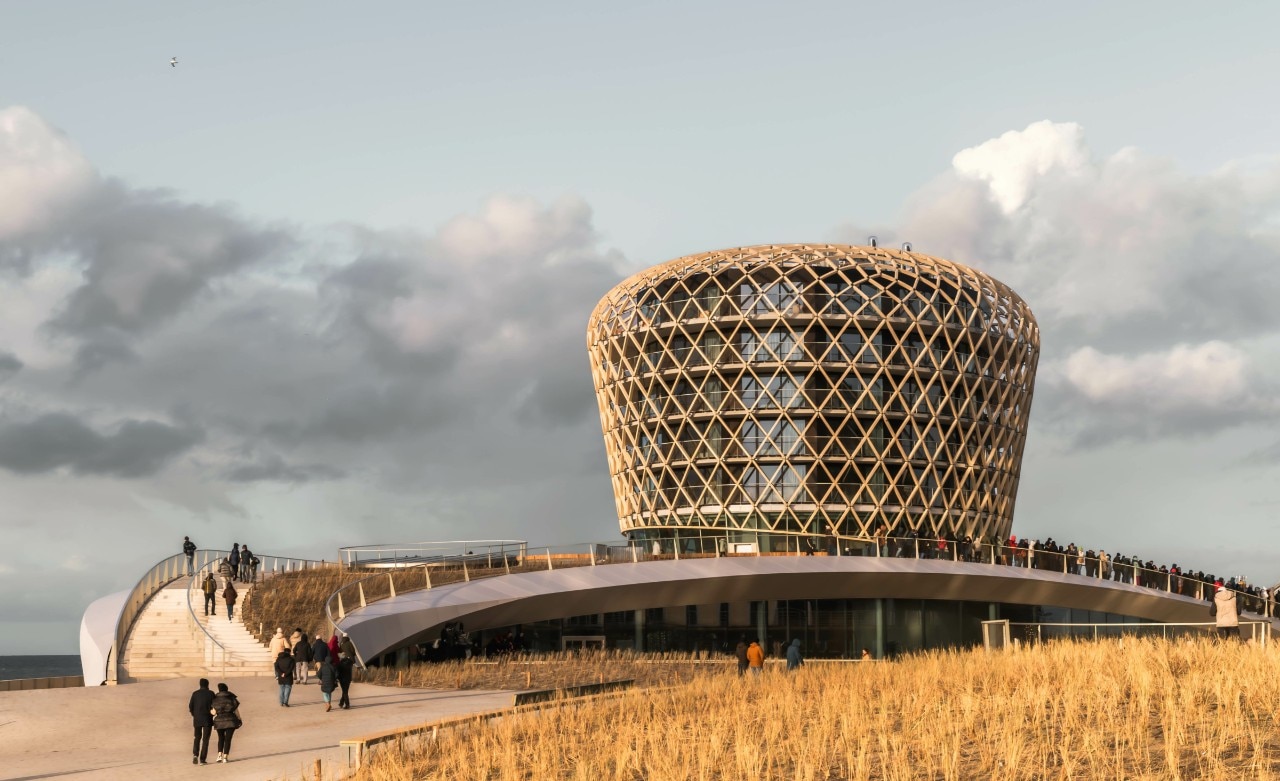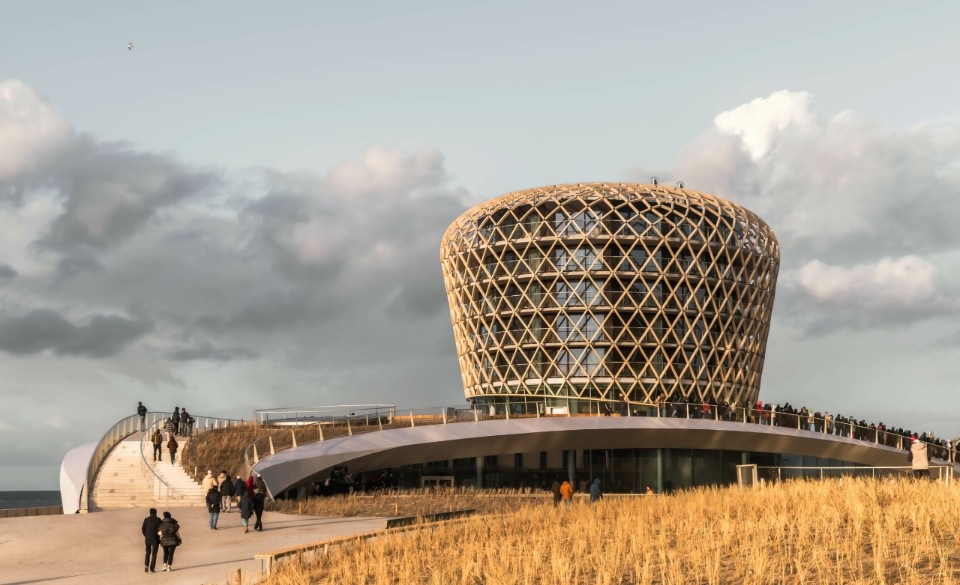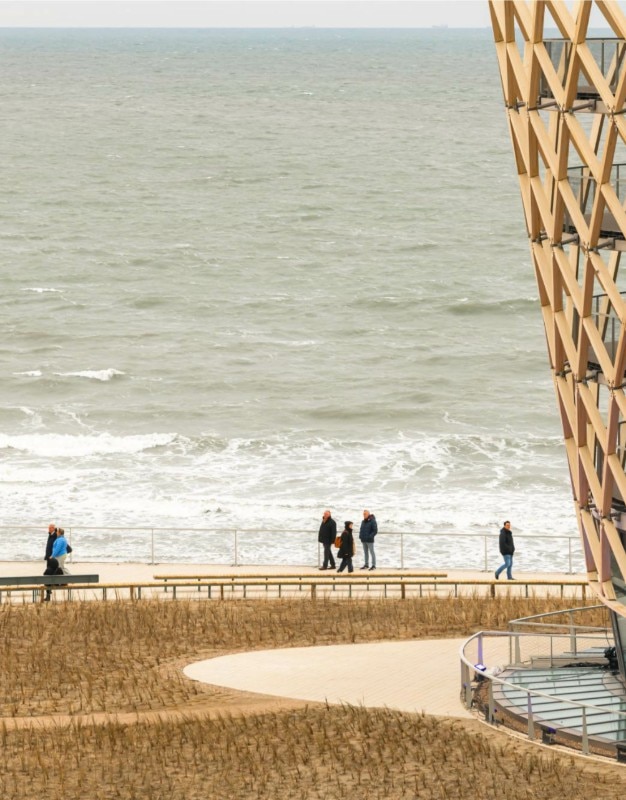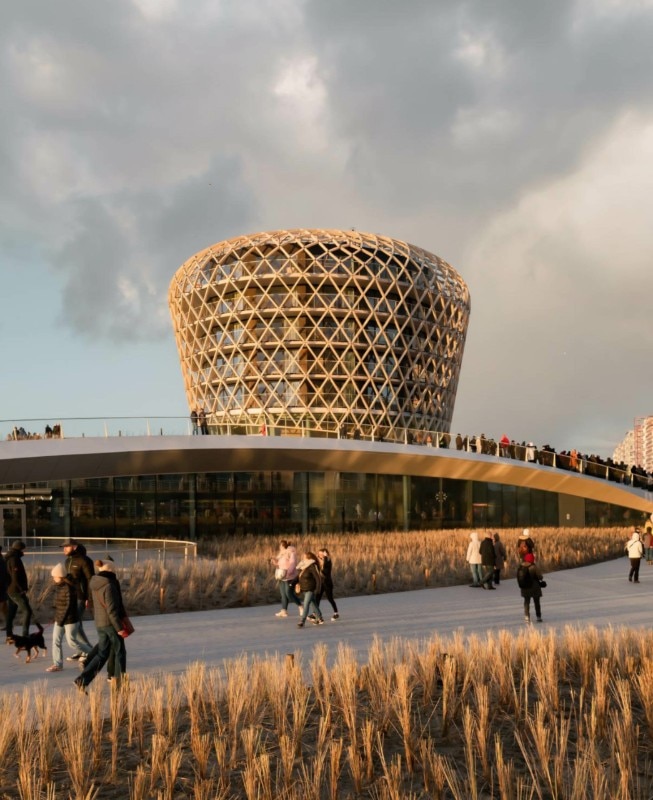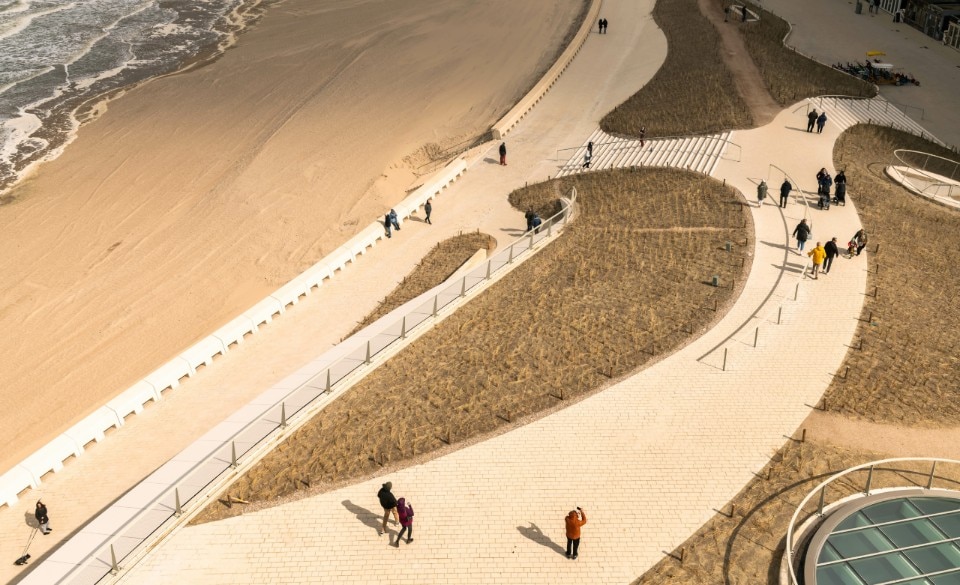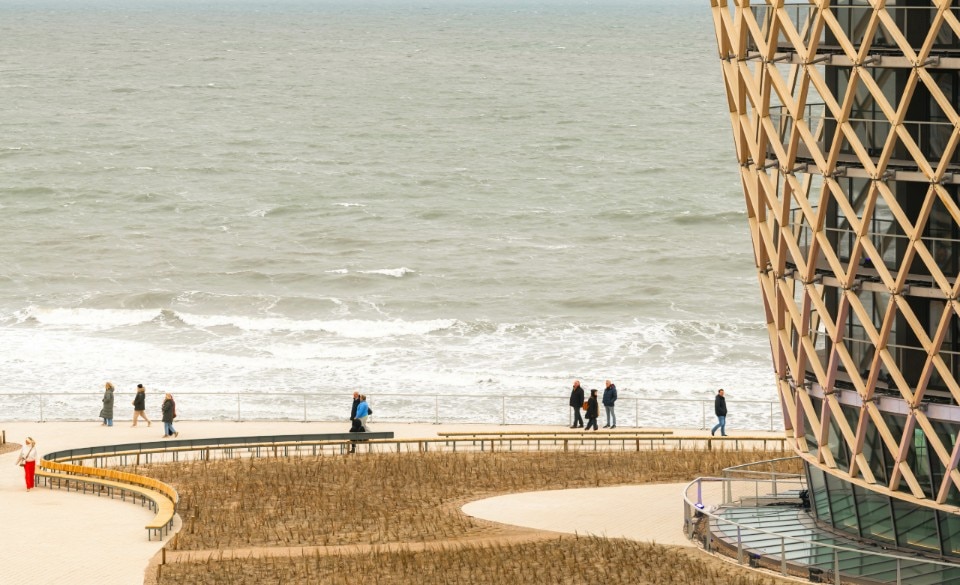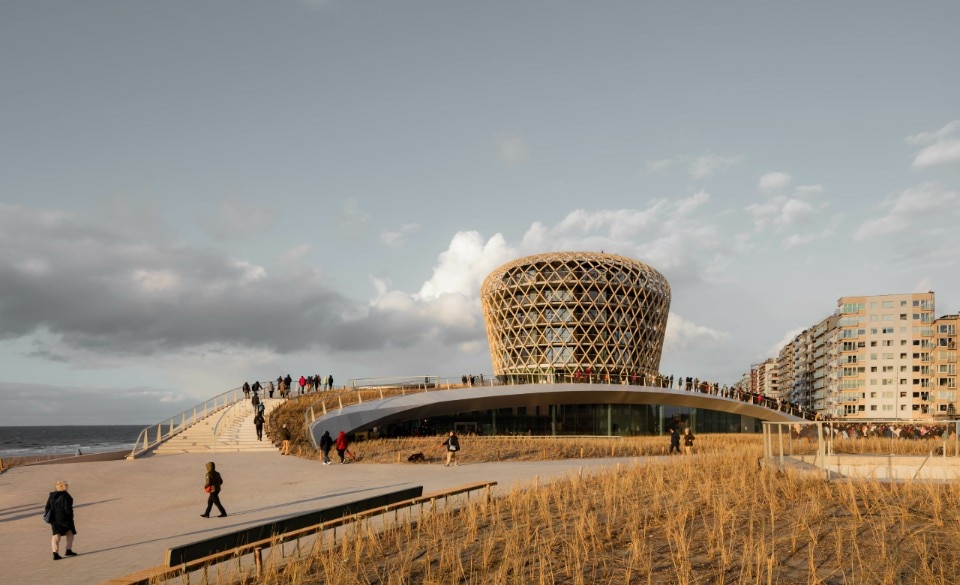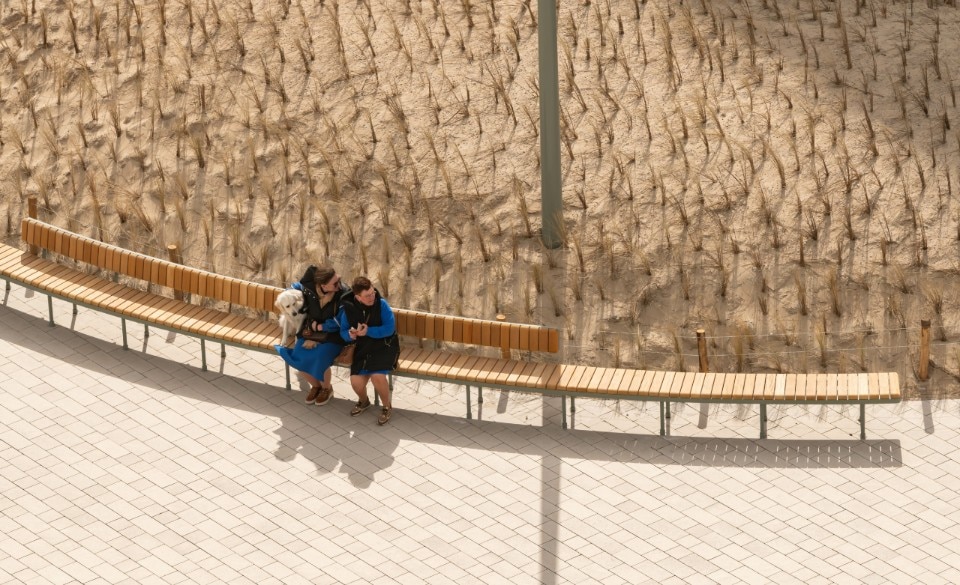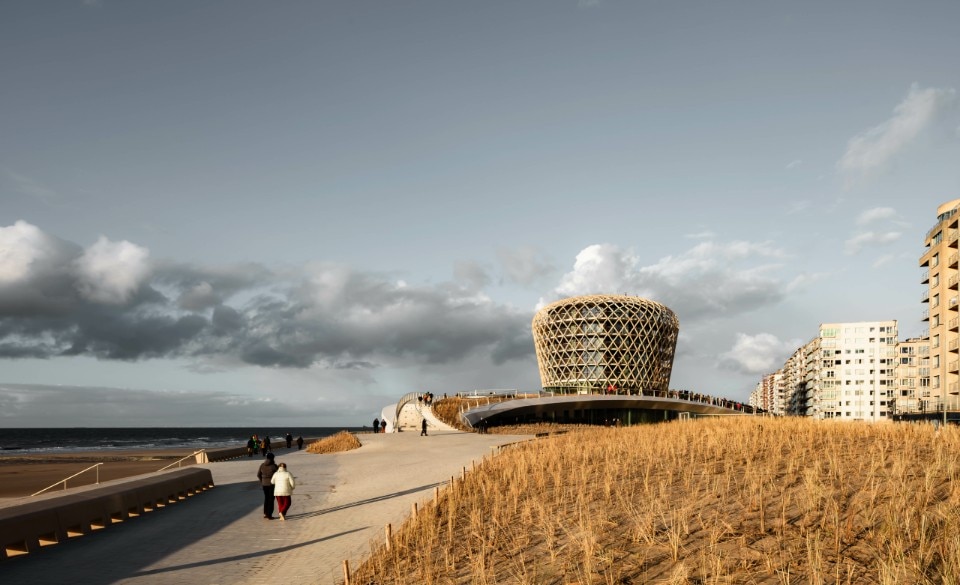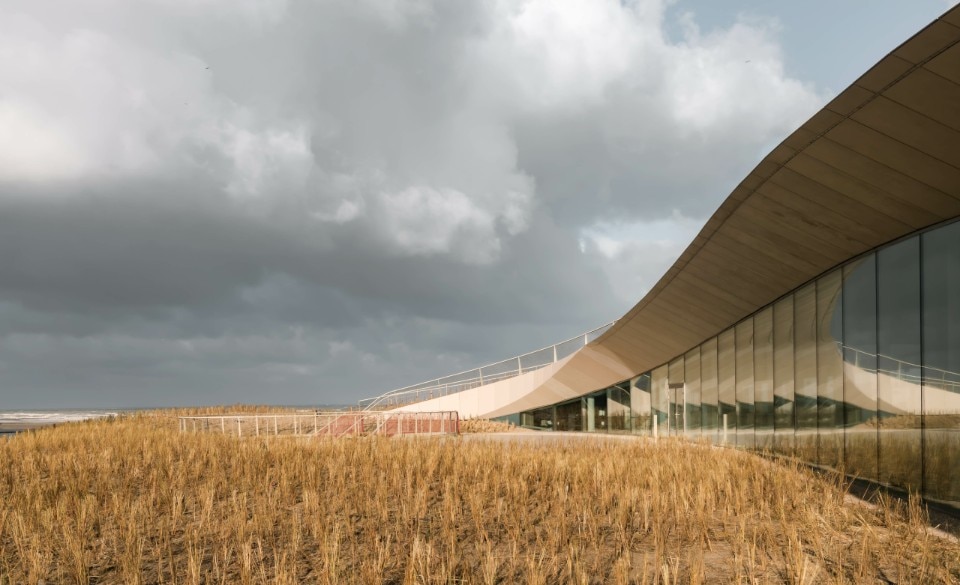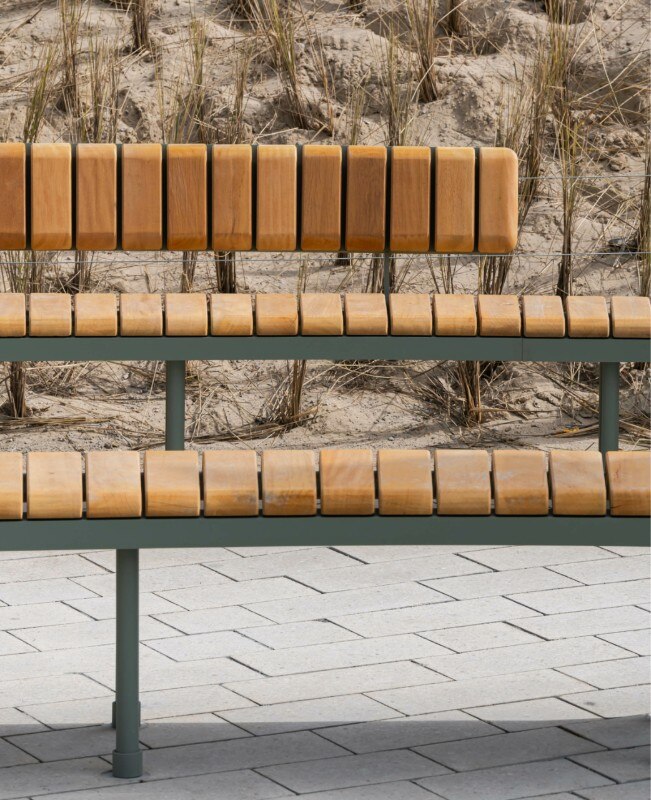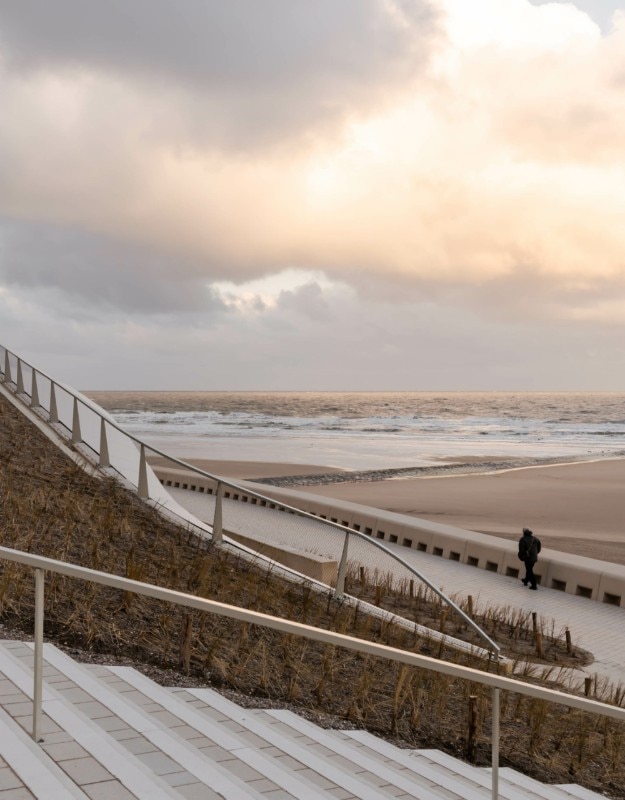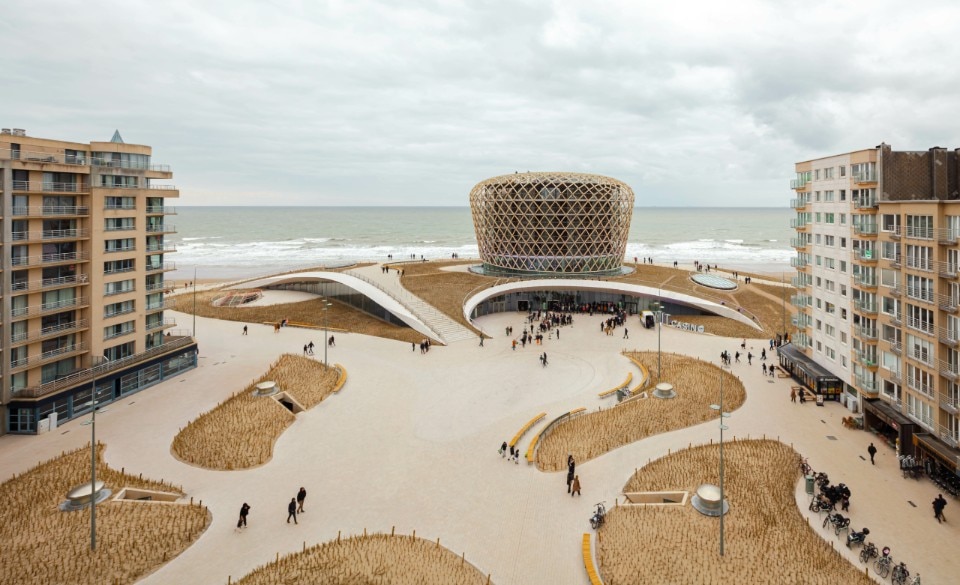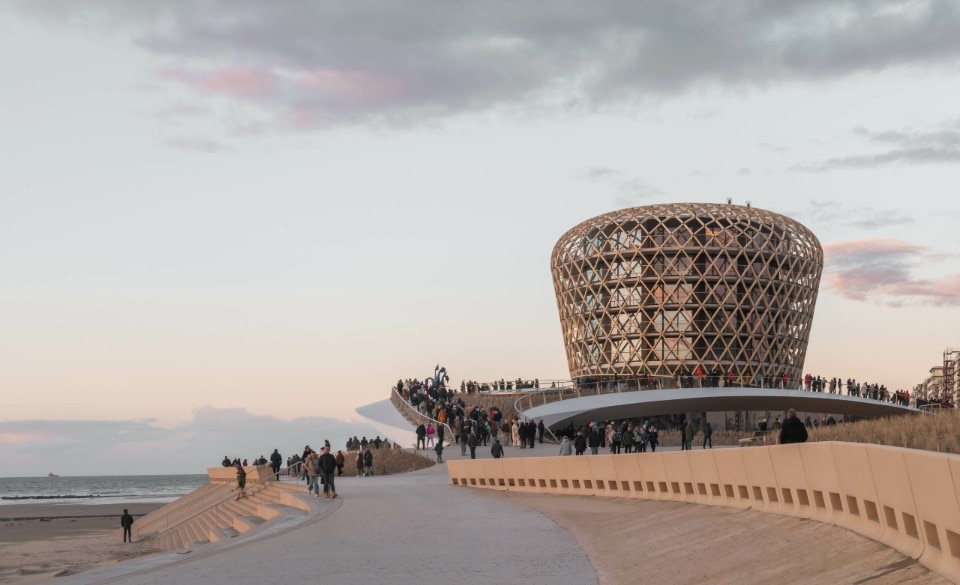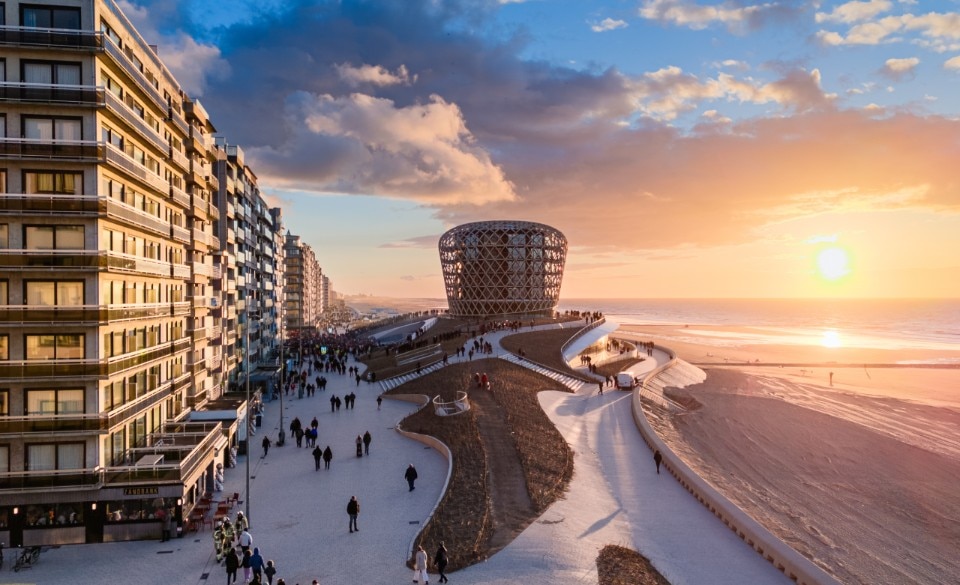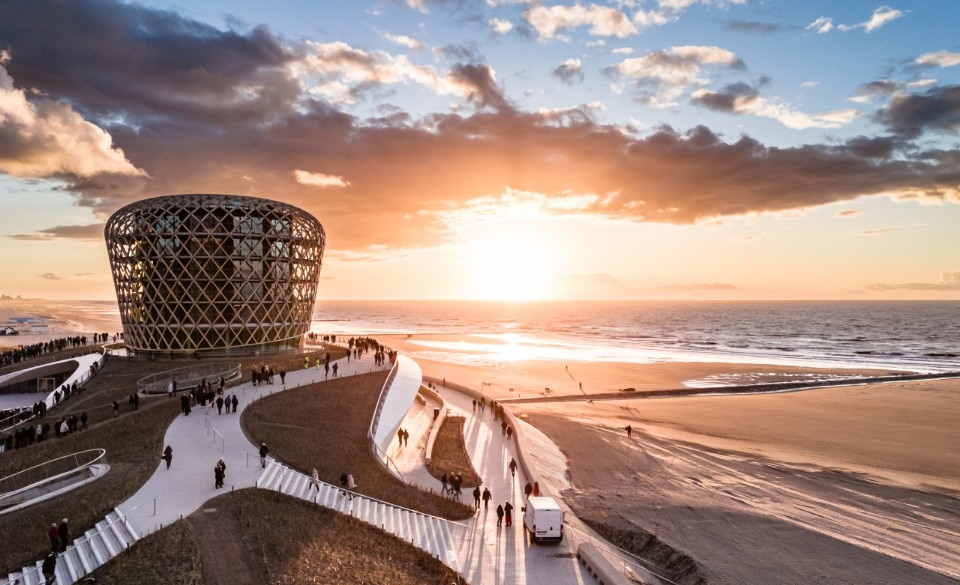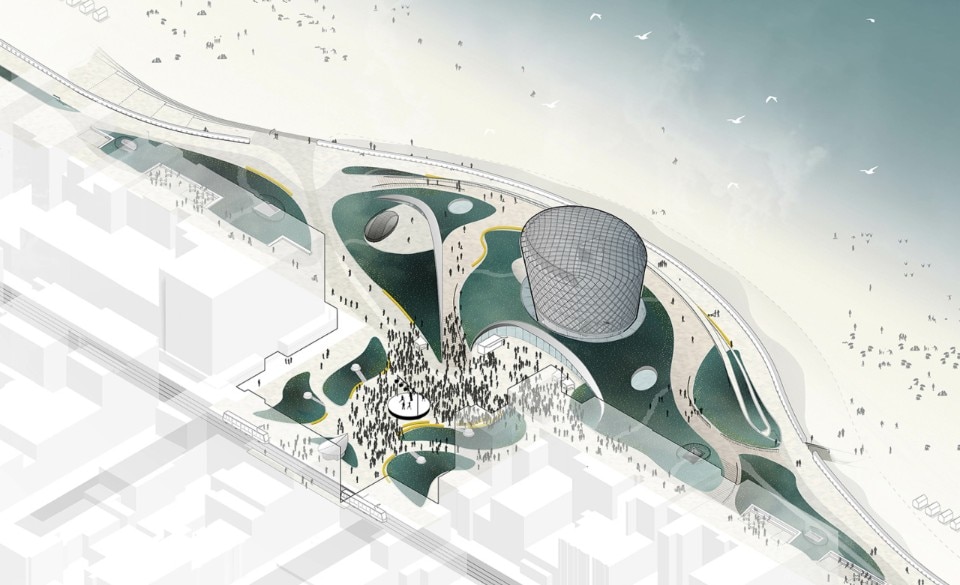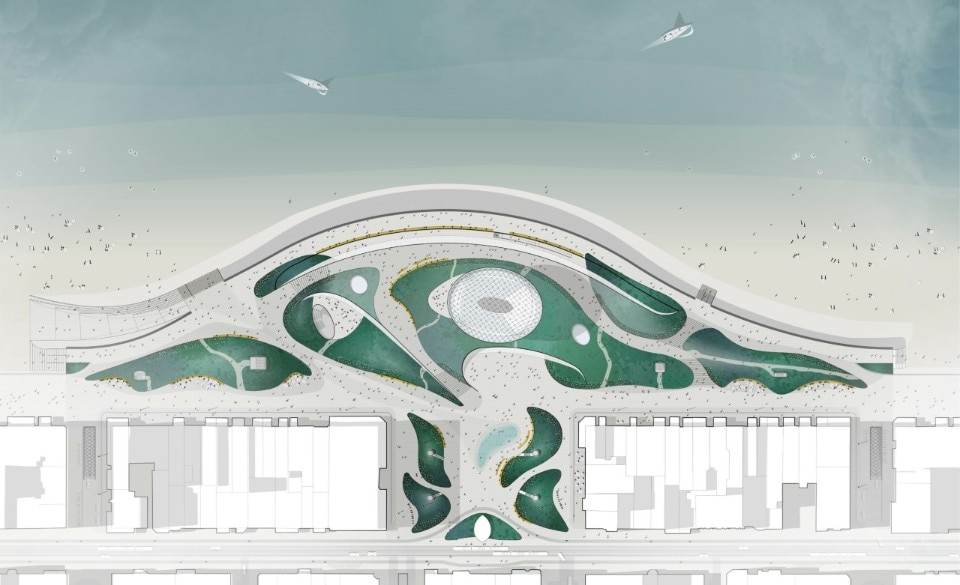On the Flemish coast of Middelkerke, Dutch firms DELVA Landscape Architecture and ZJA — in collaboration with OZ and Bureau Bouwtechniek, together with a team of experts forming the Nautilus Construction Team — have directed the construction of a new casino and the surrounding public space.
Completed as a sculptural wooden lattice landmark, the building appropriates the maritime context by integrating into a new experiential landscape inspired by the former medieval island of Testerep, that has been reconnected to the mainland, characterised by dunes and canals. In the centre of the landscape, the hotel tower rises like a new lighthouse over the sea. The SILT Middelkerke also houses a restaurant, a multifunctional event space and an underground car park.
The architectural design minimises the use of energy and materials in the construction process, but the choice of more efficient production processes and the application of recycled materials also make it a sustainable project.
Volumetrically, the designers have anchored the main architecture to the site, integrating it with a new landscape design. This new artificial dune ensures that coastal reinforcement, liveability and sustainability harmonise with the existing coastline.

The integration of the underground car park also allows for the creation of a traffic-free pedestrian zone, allowing for new vegetation in the public space above. Sea grass, dunes and sand channels leading to the beach give Middelkerke its characteristic landscape back.
The architectural design minimises the use of energy and materials in the construction process, but the choice of more efficient production processes and the application of recycled materials also make it a sustainable project. The choice of wood, particularly glulam, for the open envelope around the hotel tower saves enormous amounts of CO2, because it is a renewable and circular material.
This “landscape building” combines the dune/plaza with the functions of a casino, multi-purpose hall and hotel with the open space of the beach. The interior and exterior interact intensively on all levels.


